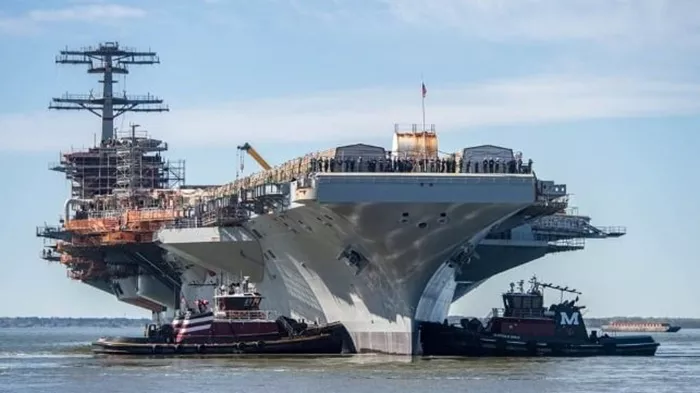U.S. Navy carriers, critical assets in global operations, are facing prolonged deployment periods due to unforeseen turbine generator damages, significantly affecting maintenance schedules and operational readiness amidst ongoing crises like the Gaza conflict and maritime security threats in the Red Sea by Houthi rebels. These challenges have compelled military strategists to extend deployment durations beyond normal limits, straining operational resources.
According to USNI reports, the delays stem from serious problems with auxiliary powerplants, limiting the availability of relief vessels crucial for these missions. Factors exacerbating this include historical budget constraints, construction delays at Newport News, developmental setbacks in the Ford-class program, COVID-19 impacts, supply chain disruptions, and workforce issues.
The Nimitz-class carriers, equipped with eight steam turbine generators each producing eight megawatts, play a pivotal role in sustaining the vessel’s critical systems during extended missions. Recent overhauls at Newport News for USS George Washington and USS John C. Stennis were significantly delayed due to major turbine generator damages, confirmed by Naval Sea Systems Command.
“Inspections revealed significant damage to one generator on each ship, necessitating unplanned additional work, thereby extending the overhaul schedules,” reported NAVSEA to USNI.
The challenges with turbine generators, designed to last the carrier’s lifetime with no easy replacement options, highlight the complexity and criticality of maintenance operations. USS George Washington notably faced prolonged overhaul periods, impacting crew morale and operational effectiveness.
After extensive repairs, USS George Washington has resumed active duty in Japan, assuming the role of the 7th Fleet’s forward-deployed carrier, while USS Ronald Reagan prepares for refit at Puget Sound Naval Shipyard. USS John C. Stennis, having completed the initial phase of refueling and overhaul, is scheduled to return to service by late 2026, marking a significant milestone in maintaining fleet readiness amidst ongoing operational challenges.
Related topics:
- Power Up Your Home: The Ultimate Guide To Choosing The Best Backup Diesel Generator
- Diesel VS Petrol Generators: Which Is Better For Your Needs?
- The Role Of Solar Generators In EV Charging

